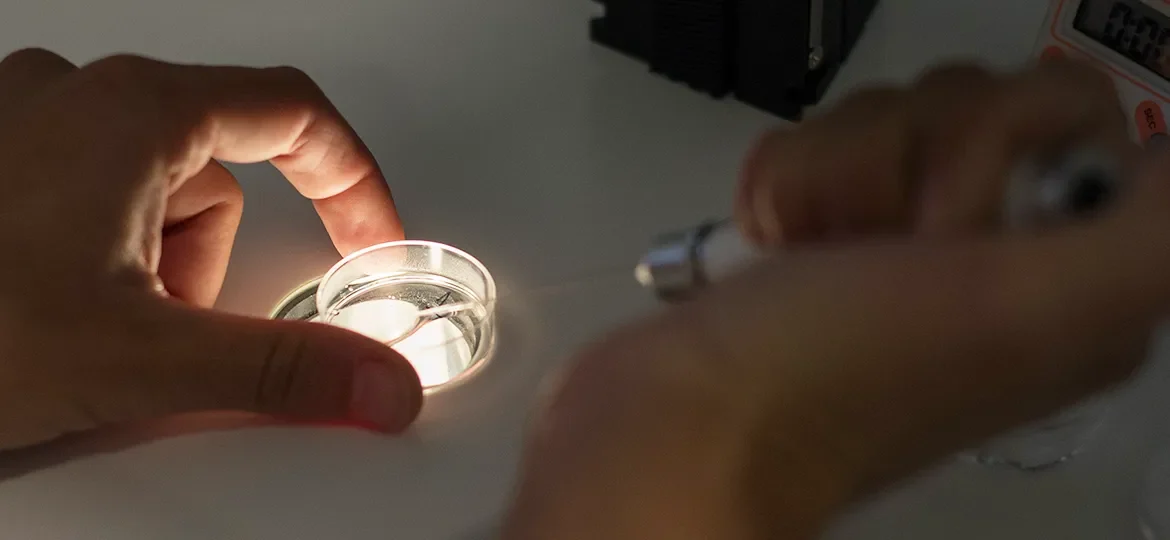
Ovodonation is, due to all the advances in reproductive medicine and techniques such as egg devitrification, one of the assisted reproduction treatments with the best success rates today. Similar to In Vitro Fertilisation (IVF), this treatment requires donor eggs to be fertilised with the sperm of the couple wishing to have a baby. These generated embryos are transferred to the recipient mother who is unable to have children with her own eggs.
For this treatment to be highly successful, it is essential to take care of every detail of all the processes that underlie egg donation. In this article, we will analyse the importance of egg vitrification techniques in egg donation treatments.
What is egg devitrification?
After explaining what ovodonation is, we will now go into one of its crucial procedures, the vitrification and devitrification of eggs. By vitrification of eggs we mean the technique applied to the cryopreservation of human oocytes in metaphase II (mature eggs). This consists of ultra-rapid cooling of the oocytes in liquid nitrogen at -196º Celsius. These can be stored for a prolonged period of time. Once the oocytes are to be retrieved, the devitrification technique is applied. In this phase, the cryoprotectants used in vitrification are removed and the oocytes are rehydrated. This process lasts approximately 15 minutes.
Although the survival rate after devitrification is over 90% in egg donor, studies show that the excellent training of the operating embryologists is crucial to minimise the variability of the results and to guarantee the success rate of the treatments.
Fertilisation of the devitrified eggs:
Once this careful technique has been carried out, the eggs will be fertilised in the laboratory using assisted reproductive techniques. Because the eggs have been decumulated (i.e. the layer of cells surrounding them has been removed), the technique of choice is intracytoplasmic sperm injection (ICSI), where a sperm is introduced directly into the egg.
After fertilisation, the resulting embryos are cultured in the laboratory for 5 or 6 days until they reach the blastocyst stage. Subsequently, the best quality embryos are selected for transfer to the recipient’s uterus, previously prepared for implantation.
Advantages of using vitrified eggs in oocyte donation:
- Immediate availability: Vitrification makes eggs available at any time, without the need to synchronise the menstrual cycles of the donor and recipient, thus reducing waiting times.
- Wide selection of donors: Ovobank has the most advanced facilities, as well as state-of-the-art equipment to be able to provide a top quality service within the Ovoclinic assisted reproduction clinic.
- High success rates: Current vitrification and devitrification techniques have achieved egg survival and pregnancy rates that are even better than those obtained with fresh eggs.
Ovobank’s egg vitrification process is carried out by qualified personnel trained in the field of cryobiology and the means and products used comply with current European regulations. As a result, the eggs are processed in the best possible conditions, preserving all their potential in order to be able to offer a quality service with the maximum guarantee of success.











